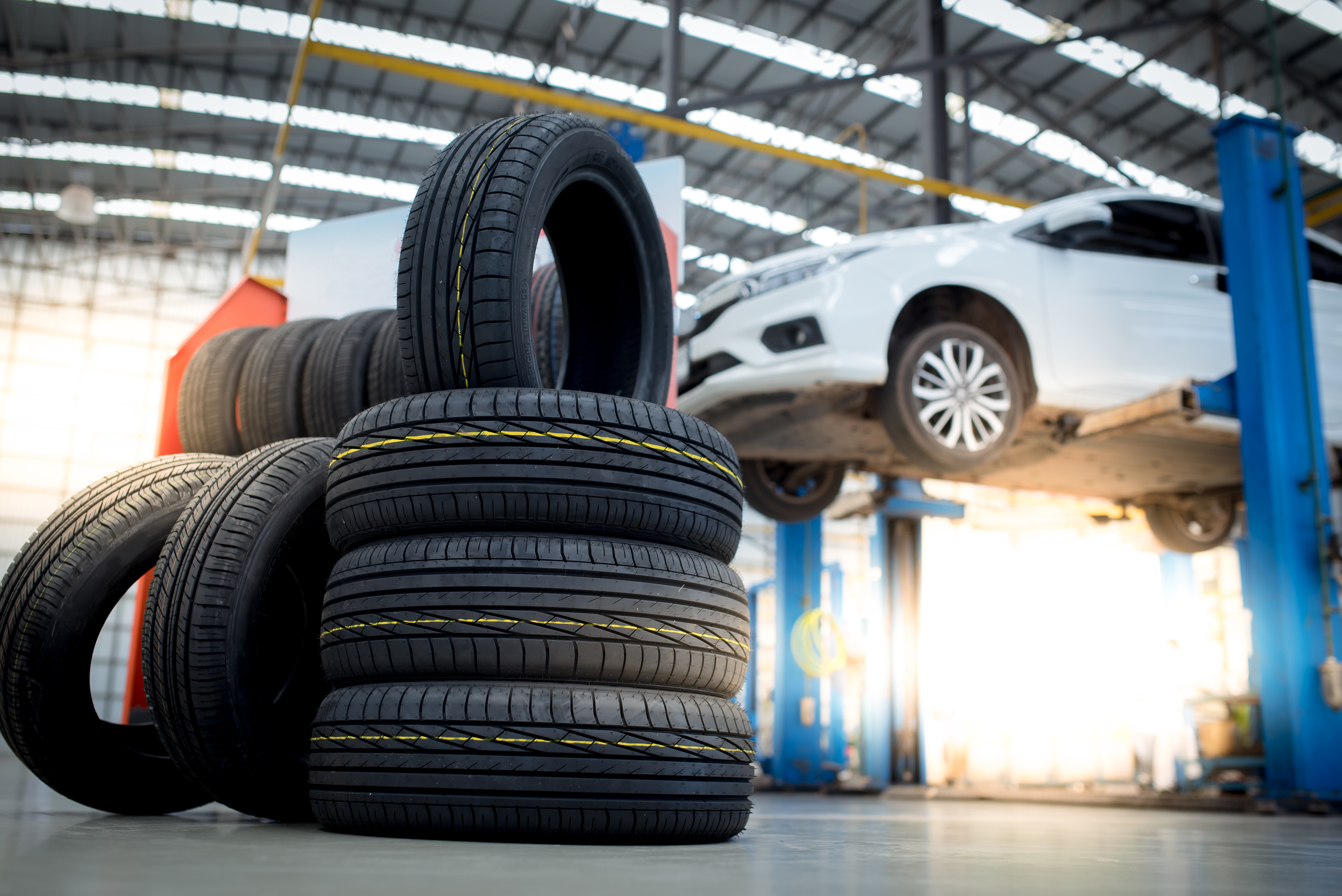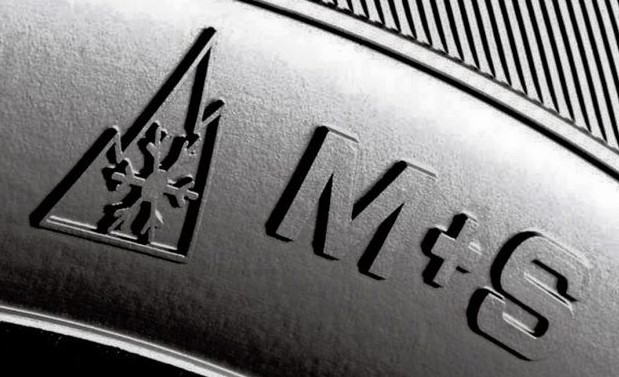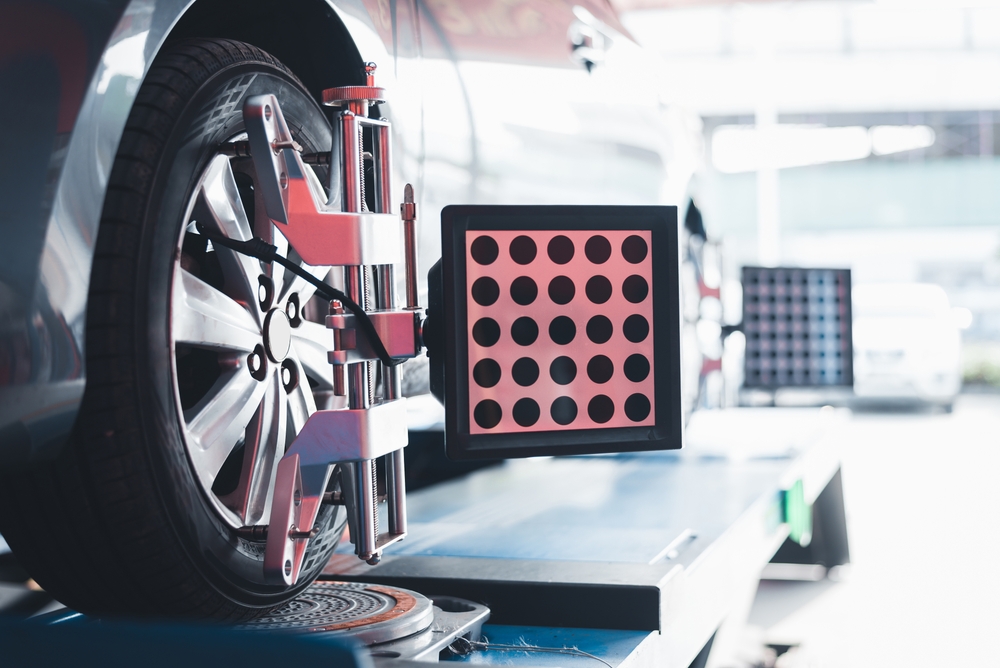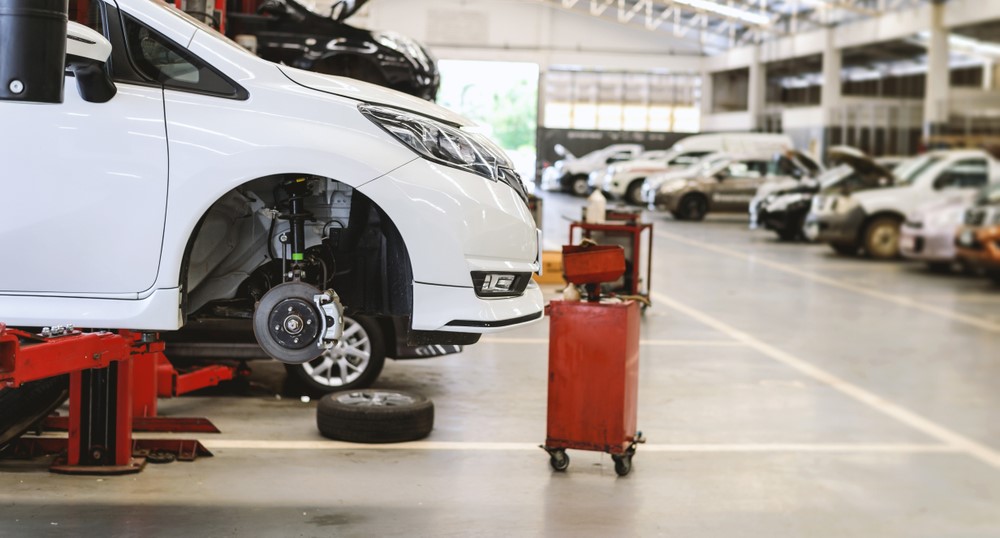
You're in Need of New Tires? Find the Best Tires for Your Vehicle at Kunes Auto Group of Mt. Carroll Service Center
How can you tell if it's time for new tires?
Is it time for new tires? Knowing when to replace your tires is crucial for your safety and your vehicle's performance. Look for these key signs to determine if it's time for new tires:
- Low tread depth
- Sidewall damage
- Uneven wear patterns
When choosing new tires, it's essential to consider your vehicle, driving habits, climate, and terrain to ensure you make the best decision for your needs. On our shelves, you will find various tire types available, such as biannual seasonal tires, snow/winter tires, summer tires, all-year tires, and performance tires. Each type serves a different purpose and is designed for specific driving conditions. As you explore these different tire types, don't hesitate to consult with a Kunes Auto Group of Mt. Carroll Service Center technician to get personalized advice and recommendations.
- Biannual Seasonal Tires: Switch these tires out twice yearly to achieve optimal tire performance during both summer and winter months.
- Snow/Winter Tires: Experience top-notch winter traction with these tires, featuring tread edges that grip ice and snow, wide channels to disperse slush, and rubber that remains flexible even in colder temperatures.
- Summer Tires: Enjoy reduced rolling resistance (and fuel consumption) compared to winter, all-season, or off-road tires, thanks to smoother treads (for increased road contact) and rubber designed for warmer climates.
- All-Year Tires: If you prefer not to change tires seasonally, these adaptable tires provide a balance between summer and winter driving requirements, both on and off the road.
- All-Season Tires: These tires come standard on most passenger vehicles and are perfect for street driving in regions with mild winters.
- All-Terrain Tires: These versatile tires offer a mix of off-road traction, durability, and smooth highway handling, making them suitable for both street and moderate off-road use.
- Mud Tires: Ideal for primarily off-road use (especially on challenging terrain), these tires excel in navigating mud, rocks, sand, dirt, and deep snow.
- Low Profile Tires: With wide treads and short sidewalls, these tires deliver improved cornering and handling.
- Performance Tires: Boasting soft rubber compounds and rigid sidewalls, these tires offer exceptional traction, maneuverability, and performance.

Seeking top snow traction in an all-year tire?
Look for the three-peak mountain snowflake (3PMSF) symbol on tires that are rated for severe snow conditions. To qualify, a tire must demonstrate a 10% improvement in traction on moderately packed snow during manufacturer tests. This symbol is commonly found on most dedicated snow tires and select year-round all-terrain and all-season tires.

Flat Tire Repair
While we do offer new tires for sale, we prioritize tire repair whenever possible to ensure the set remains intact and lasts longer. Our goal is to help you prolong your tires' lives and assist you in choosing your next set when necessary.
During your tire repair appointment, our Kunes technicians will inspect and inform you if it can be safely repaired according to specific U.S industry standards.
Kunes makes tire purchasing and ownership a breeze. We're here to assist you in choosing the right tires, providing expert installation, and ensuring proper maintenance for a lengthy tire lifespan. As part of every Kunes inspection, we even examine your tire pressure and tread wear, regardless of the reason for your visit to Kunes.
Once you've selected the ideal tires for your needs, remember to monitor their condition and performance regularly. Tires naturally lose pressure over time, so checking and adjusting tire pressure monthly can help maintain optimal performance and fuel efficiency. By understanding the signs of tire wear, choosing the right tire type for your vehicle and driving conditions, and maintaining your tires with regular check-ups, you can ensure a safe and enjoyable driving experience. Trust Kunes Service Centers for expert guidance and support in your tire selection and maintenance journey.
Wheel Alignment

We recommend having your wheel alignment inspected and your tires balanced to ensure even wear and a longer tire lifespan, especially after purchasing your new tires. Our expert Kunes service advisors are here to help you choose the right tires for your vehicle, provide expert installation, and maintain your tires for optimal performance.
What are the signs that my vehicle needs a wheel alignment?
If your vehicle requires wheel alignment, you may notice the following symptoms in your steering wheel and tires:
- Drifting to the right or left: This occurs while holding your steering wheel straight on a level road.
- Off-center steering wheel: Your vehicle is moving straight ahead, but your steering wheel appears to be turned.
- Tire noise: This results from misaligned tires being dragged in a direction different from the one they are pointed toward.
- Uneven tire wear: You may observe diagonal wipe, feathering, camber wear, or toe wear tread patterns, or a difference in tread wear between the front and back tires.
How much time does a wheel alignment take?
A wheel alignment typically takes around an hour as a standalone service. Additional time may be needed if any damaged components require replacement. Please allow extra time for any other tire and wheel services commonly performed along with wheel alignment.
How long should a wheel alignment last?
Since most vehicle manufacturers don't include wheel alignment in their standard maintenance schedules, we recommend having it done every one to two years. We strongly advise getting a wheel alignment when you purchase new tires to ensure even tread wear from the start. In the meantime, it's a good idea to check your alignment whenever you have your tires rotated or balanced.
Do you need a two-wheel or four-wheel alignment?
Whether you can adjust the alignment on just two wheels or all four depends on your vehicle's drivetrain and suspension type. However, modern wheel alignment is designed to be performed as a four-wheel system. Regardless of whether the rear wheels can be adjusted or not, the rear wheel alignment angles should be measured, and the front wheels should be aligned in relation to the rear wheels. Your Kunes Service technician can inform you which wheels on your vehicle can be adjusted.
Can wheel alignment cause vibrations?
Improper wheel alignment can cause your vehicle to vibrate as the misaligned wheels point in different directions. The wheels and tires experience tension and friction as they push or pull against each other. Your ride becomes even bumpier as your tire treads wear down at the stress points.
Misaligned wheels are only one possible cause of vibrations in your car. If you experience vibrations in your steering wheel at specific highway speeds, you may need tire balancing. Additionally, vibrations in your wheels might indicate that suspension service or tire imbalance is necessary.
Wheel alignment is a crucial aspect of vehicle maintenance that ensures your tires are positioned correctly, providing optimal contact with the road and preventing uneven tire wear. Regular wheel alignment checks and adjustments can significantly enhance your driving experience and prolong the life of your tires.
At Kunes Auto Group of Mt. Carroll Service Center, our skilled technicians utilize state-of-the-art equipment and their expertise to deliver precise wheel alignment services tailored to your vehicle's needs. Don't let misaligned wheels compromise your safety or the lifespan of your tires – schedule an appointment with us today and experience the difference that expert care and attention can make for your vehicle's performance and longevity.
Tire Balancing

Have you noticed your steering wheel vibrating as you reach the speed limit? It might be time for a Kunes Service Center technician to inspect your tires. Indeed, vibrations at specific highway speeds often indicate tire imbalance, which is typically first noticed in the steering wheel.
If left unresolved, an unbalanced tire can reduce tire life, increase fuel consumption, and ultimately damage shock absorbers, wheel bearings, and wheel assemblies. Additionally, your ride will become bumpier and less safe. Ensure your tires are inspected at the first sign of potential tire imbalance.
What are the signs of unbalanced tires?
Vibrations at specific speed ranges: Various auto repair issues can cause vibrations, but tire imbalance is the primary culprit if vibrations occur around 50mph and subside around 60mph. (Many drivers initially detect the sensation in the steering wheel, but vibrations can intensify to the vehicle's floors and seats.)
- Uneven tread wear, particularly in a patchy or cupping pattern. Other tire problems (misalignment, incorrect inflation) cause additional tread wear on the sides or center of the tire. Tire imbalance results in random tread wear due to uneven weight distribution within the tire.
- Bumpy or shaky ride, particularly with rhythmic thumping: Tire imbalance can cause an uncomfortable ride, and the subsequent worn tread patches can hit the pavement with each rotation.
- Premature wear of shock absorbers, wheel bearings, and wheel assembly, typically caused by the bumpy ride resulting from unbalanced tires.
- Decreased fuel efficiency. It may be challenging to identify this symptom amidst various factors affecting fuel consumption, but any condition impacting tire traction or steering will also increase engine workload.
What is the purpose of tire balancing?
Tire balancing (or wheel balancing) aims to identify uneven tire rolling due to irregular weight distribution and rectify the issue by attaching weights to specific wheel areas.
Are tire balancing and tire rotation the same thing?
Tire balancing, tire rotation, and wheel alignment are distinct services that complement each other to prolong tire life and improve road safety. Tires are often balanced while they're removed from the vehicle for tire rotation or wheel alignment, which may cause confusion between these services.
What leads to unbalanced tires?
Minor imbalances in tire components can occur during manufacturing, shipping, and storage. Additional imbalances may arise from road conditions like potholes, curb contact, and other minor tire or wheel damage. Driving on improperly inflated tires or misaligned wheels can also stress the incorrect parts of your tire and create new weight imbalances.
The bottom line: Tire imbalance is unavoidable! Therefore, tire balancing should be a routine part of tire and wheel maintenance, along with wheel alignment, tire rotation, and proper tire inflation.
What do unbalanced tires sound like?
Two sounds associated with unbalanced tires warrant immediate attention. The first is a rhythmic thumping at highway speeds, possibly caused by a bare spot in your tire tread hitting the pavement with each rotation.
The second sound is a humming noise during slight turns or lane changes, which could indicate a damaged wheel bearing. These sounds suggest reduced traction and steering control and an increased risk of blowouts.
How long does tire balancing take?
Balancing a set of four tires can take anywhere from 45 minutes to two hours as a standalone service. An older tire with more imbalances due to wear and tear will often take longer to balance than a new tire with minor imbalances from shipping and storage.
Tire balancing is frequently combined with other services that involve tire removal and remounting, such as tire rotation or new tire installation. Your Kunes technician can provide an estimated completion time for all the tire services you select.
Tire balancing is an essential part of vehicle maintenance that ensures the even distribution of weight across your tires, promoting a smoother, safer driving experience. By addressing tire imbalances promptly, you can extend the life of your tires, reduce fuel consumption, and prevent unnecessary wear on other vehicle components.
At Kunes Auto Group of Mt. Carroll Service Center, our skilled technicians are equipped to provide precise tire balancing services to keep your ride smooth and your tires in optimal condition. Don't let unbalanced tires compromise your vehicle's performance and safety – schedule an appointment with us today to experience the benefits of expert care and maintenance.
Tire Rotation

What is a tire rotation?
Tire rotation refers to the practice of shifting each tire to a different wheel on the vehicle to ensure even wear on all parts of every tire over time. Uniform tire tread helps maintain consistent traction on the road and reduces the risk of a blowout. By regularly rotating your tires, you can achieve a safer, more stable vehicle and extend the life of your tires.
Why do tires wear unevenly?
Different wheel positions subject tires to varying stresses. Factors such as the steering system, drivetrain, and sun exposure all contribute to tire wear. Specific tire rotation patterns exist for each drivetrain, directional vs. non-directional tires, and whether a full-sized spare tire is included in the rotation. Adhering to your rotation pattern ensures that all tires experience equal time at each stress point.
Feeling overwhelmed by this tire rotation information? Don't fret. Your Kunes technician will determine the ideal tire rotation pattern for your vehicle.
Is tire rotation the same as tire balancing?
Tire rotation and tire balancing are distinct services that are frequently performed together. Tire rotation involves shifting tires between wheels to encourage even tread wear. Balancing a tire requires removing the tire to assess and optimize its weight distribution, ensuring it rolls smoothly and wears evenly.
Tire rotation provides a convenient opportunity to balance your tires while they are off your vehicle. Because both services promote even tire wear and are often performed simultaneously, they are sometimes confused with one another.
How often should tires be roatated?
Unless your owner's manual specifies otherwise, rotate your tires at least annually or every 6,000-8,000 miles, whichever comes first. For many newer vehicles, this tire rotation schedule aligns with the common oil change interval of 7,500 miles.
If your vehicle endures high-performance driving, towing, or off-road excursions, you may need to rotate your tires more frequently. The tire specialists at Kunes can help you keep track of your tire treads' wear rate.
How long does a tire rotation take?
Tire rotation typically takes around 15 minutes as a standalone service. However, tire rotation often includes additional services like tire pressure checks, visual inspections for damage, and even assessments of tire balance and wheel alignment. These extra services require more time.
